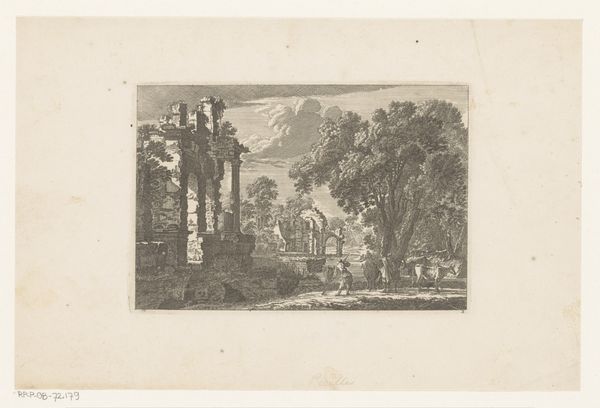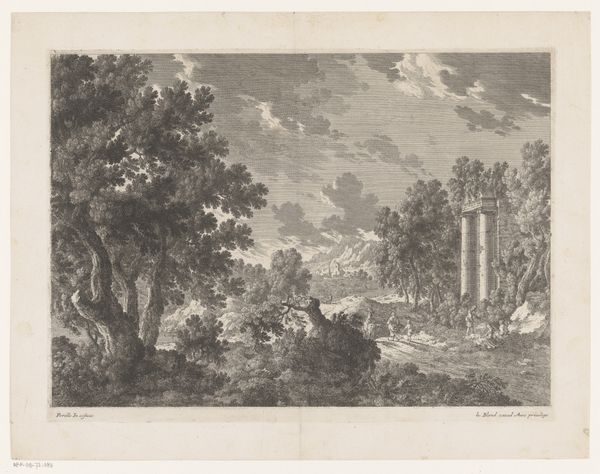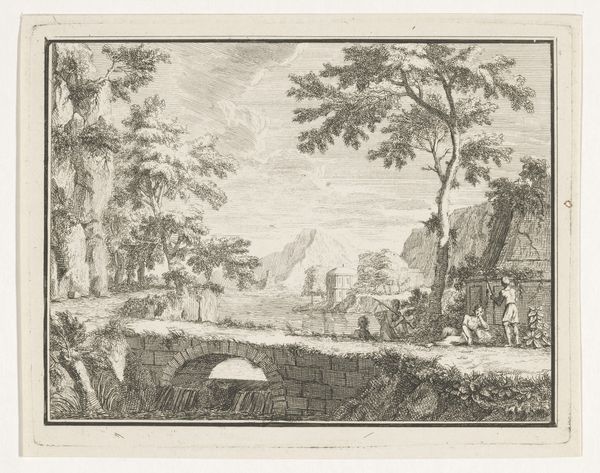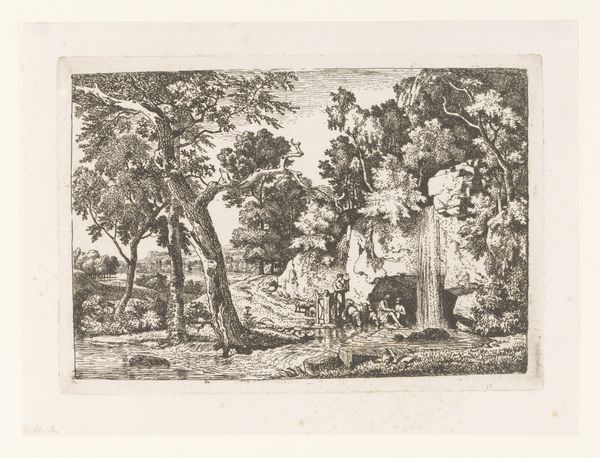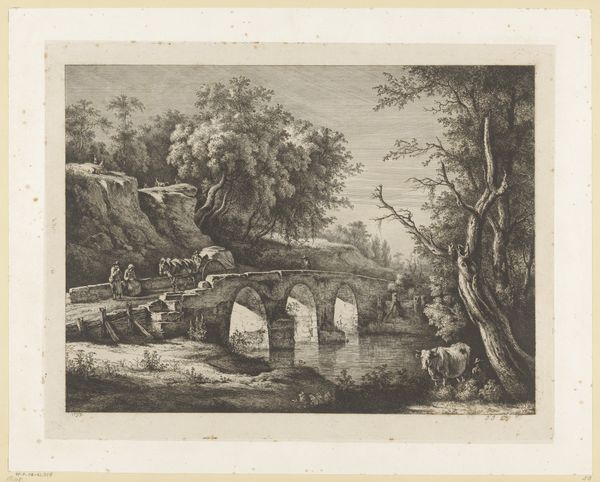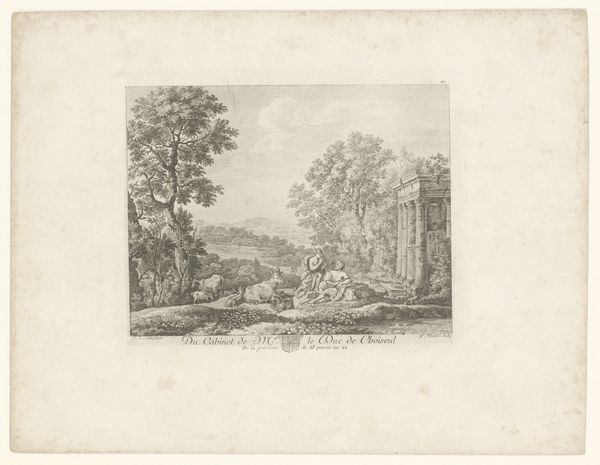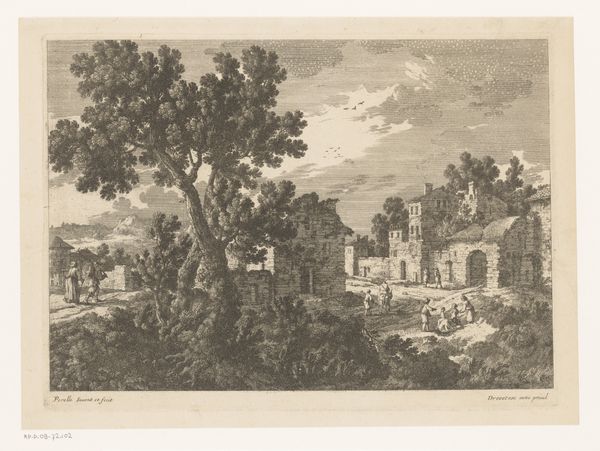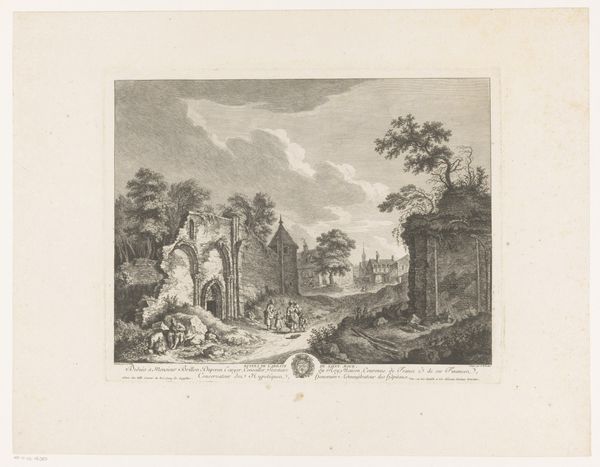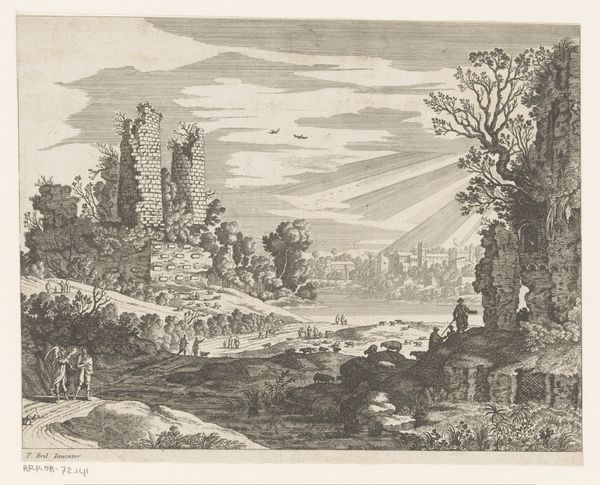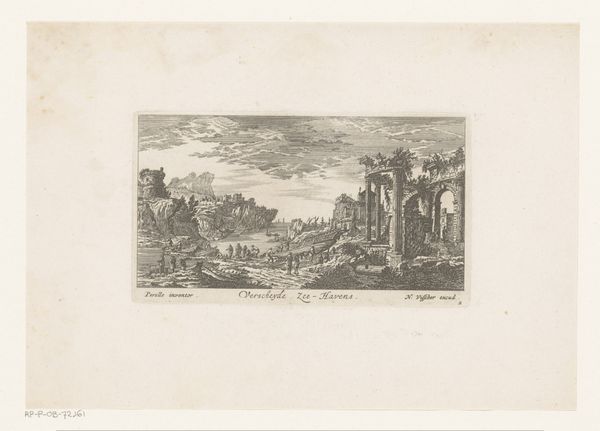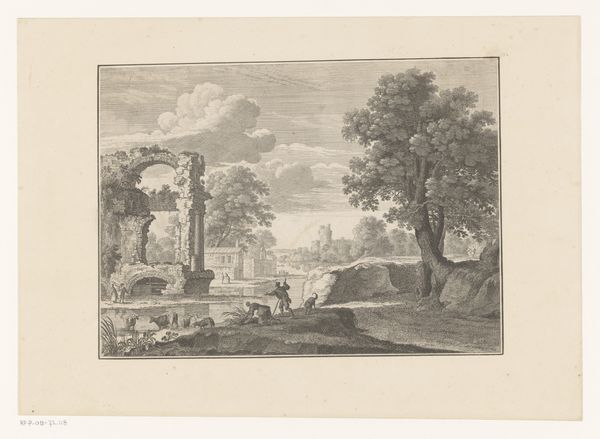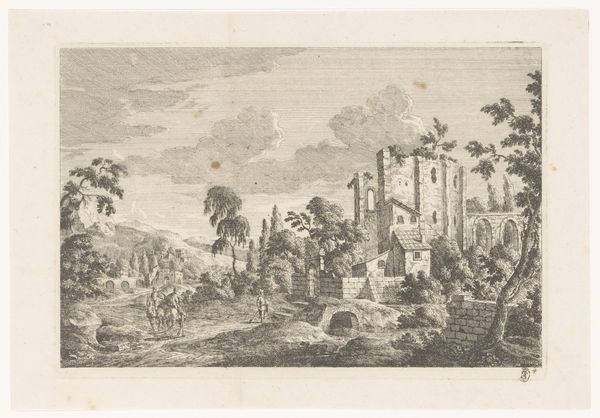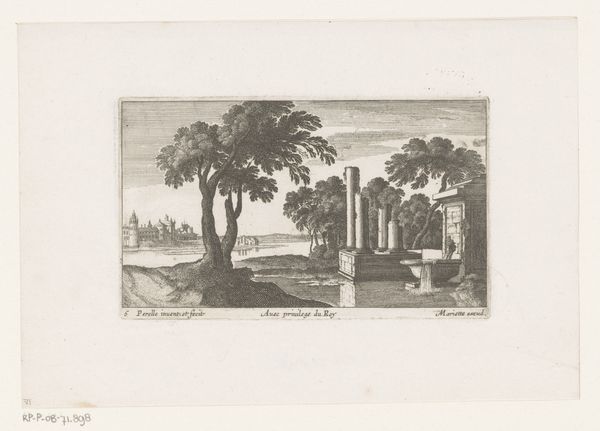
print, etching, paper, engraving
#
baroque
#
ink paper printed
# print
#
etching
#
old engraving style
#
landscape
#
classical-realism
#
figuration
#
paper
#
form
#
line
#
history-painting
#
engraving
#
realism
Dimensions: height 215 mm, width 319 mm
Copyright: Rijks Museum: Open Domain
Editor: Here we have "Landscape with Watermill and Antique Fountain" by Nicolas Perelle, likely created sometime between 1613 and 1695. It’s an etching on paper. It feels so meticulously detailed, almost like a stage set for a historical drama. What catches your eye in this piece? Curator: What strikes me is how this landscape actively constructs an image of the past. It blends idealized classical ruins with a working watermill, positioning the "antique" as integral, almost picturesque, to contemporary life. How do you think this idealization may have functioned for its audience? Editor: Perhaps it’s a way of legitimizing the present by linking it to a glorified past? Like saying, "We're building on a strong foundation." It also feels like there's an element of ownership being asserted over history. Curator: Exactly. Consider who would have been commissioning and consuming these images. Prints like these circulated widely among the rising bourgeoisie. Owning a scene representing the appropriation of antiquity arguably mirrored their aspirations for social and cultural capital. It’s about shaping a narrative. Editor: That’s fascinating! I hadn't thought about it in terms of social climbing through imagery. It makes me wonder about the watermill. Was that just a visual element, or did it also carry a symbolic weight? Curator: The inclusion of the watermill speaks to a complex dynamic. It shows both continuity with and the harnessing of the past. The crumbling structures signify legacy, but also potential and how they can be repurposed, industrialized, to make way for modern developments and agendas. Editor: I see. It is less a passive scene and more a visual argument about progress. I never would have considered that. Thank you! Curator: It shows the value in seeing art as tied to broader social and political dialogues.
Comments
No comments
Be the first to comment and join the conversation on the ultimate creative platform.
